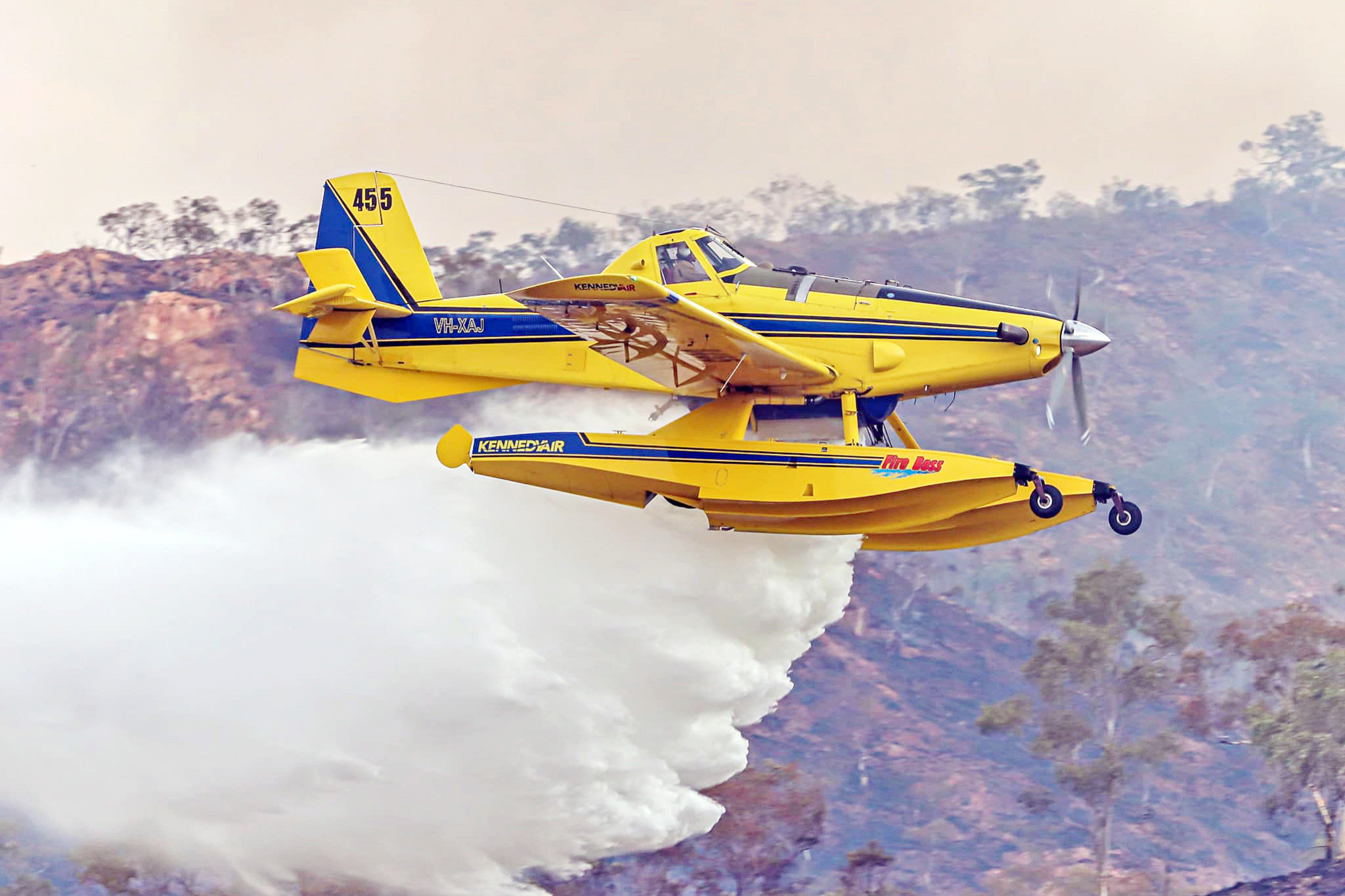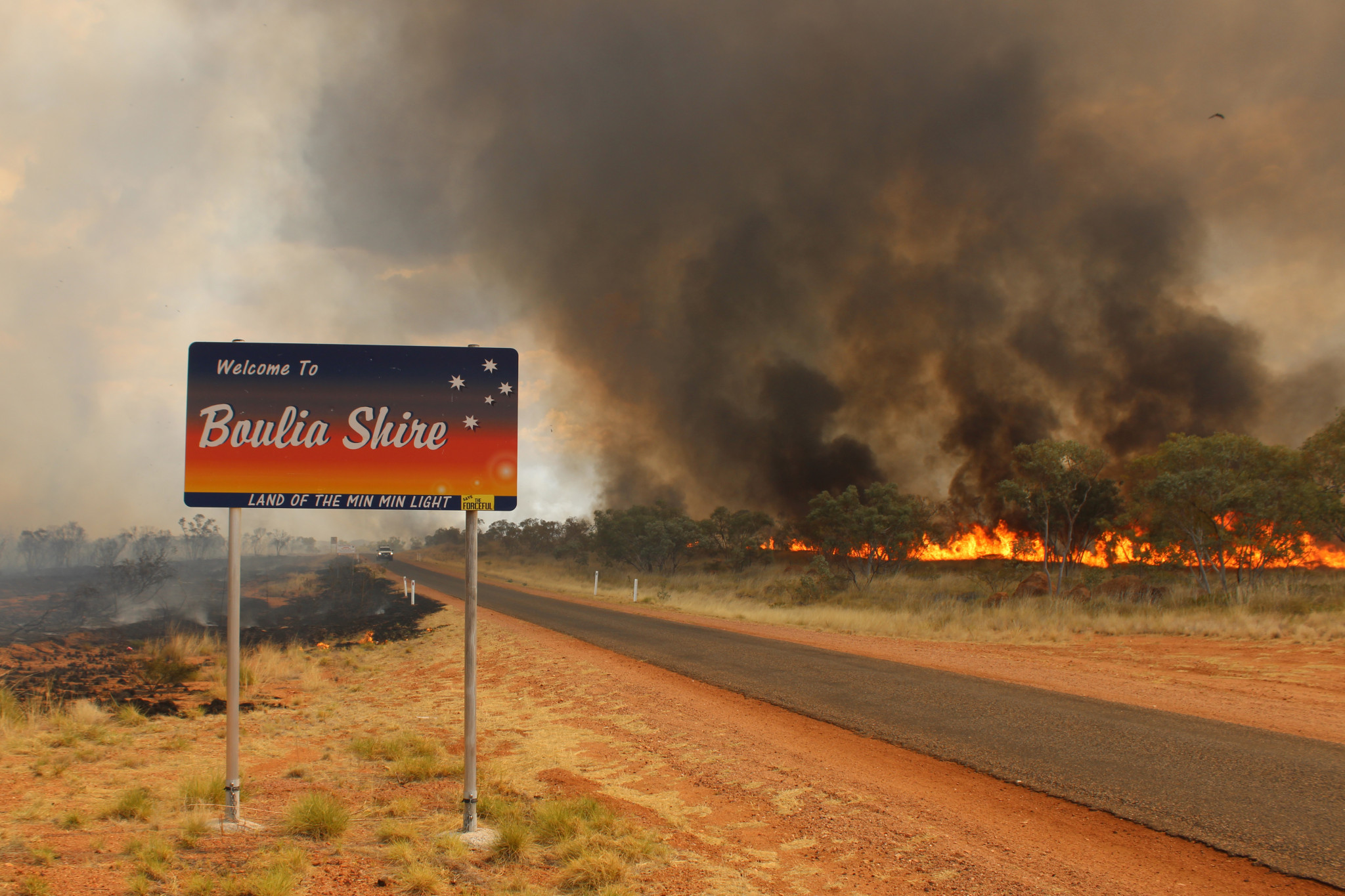General News
9 October, 2024
Water bombers play big role in extinguishing North West fires
Aerial support has made a big difference, say fire officials.

The deployment of two coastal aerial water bombers proved a major turning point in efforts to contain a massive 65km fire front south and west of Mount Isa, with fire crews reducing the blaze area to about one kilometre in size in less than 48 hours.
A bright yellow Fire Boss-455 Air Tractor and a Helitak chopper were deployed alongside 15 Townsville firefighters and three light attack vehicles on the weekend to contain a bushfire that had been burning across several properties for more than one week.
The aircraft, which could be seen swiftly reloading their water tanks at Lake Moondarra, were deployed after the fire had spread across hilly terrain that proved inaccessible to rural and urban fire vehicles.
The smoke plumes from the bushfire had hovered over the city for many days.
Veteran Queensland Fire Department division commander and station officer Steve Brown was among the additional 15 crew flown from Townsville on Sunday morning to manage the incident control centre at the Mount Isa fire station and relieve local fire crews, which had worked around the clock to prevent the further spread of the blaze.
Just a handful of Mount Isa rural firefighters had been engaged to battle the blaze prior to Sunday, with local crews suffering heavy fatigue after more than 40 separate fire incidents across the city in the past five weeks.

The crews suffered a major setback on Saturday evening after forecasted rain failed to fall over the area and increased wind gusts expanded the fire front to more than 65km wide, choking the highway to Dajarra.
Mr Brown said the fire was initially sparked after a grader operator creating a fire break on a property inadvertently set off a spark from the machine.
It is understood the fire was sparked on land adjacent to the fence lines of three properties, with the rapidly moving blaze jumping the highway, creating a second fire front.
On Sunday morning, the newly arrived fire crews divided the blaze into two sections – May Downs station and Sybella Creek. The Sybella Creek fire became the primary focus as it was moving across the country that led to the Mica Creek Solar Farm and the Mica Creek Power Station.
However, no buildings or structures were directly threatened at any time.
The arrival of the water bombers proved a major turning point in the containment effort, enabling large water loads to be dumped on the blazes at 15-minute intervals while being directed by ground crews.
The Sybella Creek fire was extinguished by Sunday evening and fire breaks were also installed nearby in an attempt to prevent any potential re-ignition from threatening the nearby energy assets.
At time of print, fire crews had contained the May Downs fire to an area about one kilometre in size on land that was also accessible to ground crews and firefighting vehicles.
Mr Brown said it was hoped the fire would be fully extinguished before Friday, depending on weather conditions.
“This has been a massive effort from the Mount Isa urban and firefighters to work on this fire given how much additional work they have been dealing with for many weeks now,” he told North West Weekly.
“The landholders have been excellent to deal with and they are working very hard to try to save their properties.”
